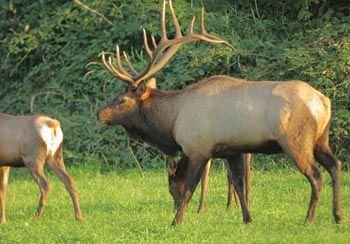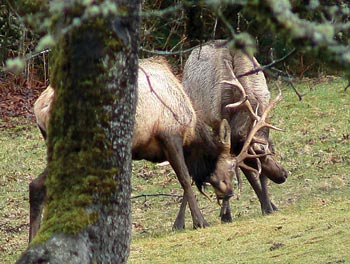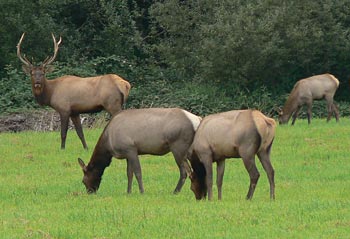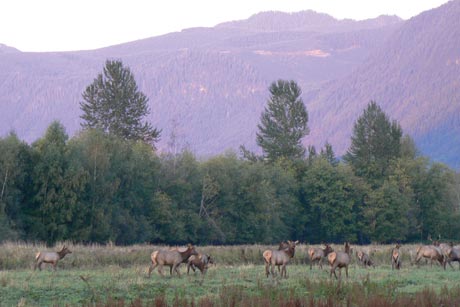Elk (Cervus elaphus) are large members of the family Cervidae, which also includes deer, moose and caribou. Historians believe elk in North America today are descendants of red deer from Asia who migrated across the Bering Strait land bridge before man, thousands of years ago. Although elk once lived across most of temperate North America, now their habitat has dwindled so that most elk today live in the western states and provinces.
As herbivores, elk eat only plants, which they digest in a complex four-chambered stomach. Food is stored in the first, largest stomach chamber, or rumen, where it is partially digested, then regurgitated, re-chewed and swallowed again. Animals that do this–like elk, their wild relatives and their domesticated cousins cattle and sheep–are called “ruminants.” An adult elk may eat 15 pounds of twigs, leaves and grasses each day. While elk in some areas migrate with the seasons for food, elk in the Snoqualmie Valley usually stay in distinct home ranges in or near the valley.
Look for Elk Signs
- Tracks
- Nipped shrubs and branches
- Droppings or scat
- Hair on branches or fences
- Antler rubs on trees
- Bugling in fall mating season
- Beds and mud wallows
- Smell elk scent in damp, shady or downwind areas
- Always observe from a distance, preferably downwind.
- Use binoculars or spotting scopes.
- Talk quietly and minimize sharp sounds.
- Pets should stay home.
- Do not disturb animals in mating season, particularly bull elk in the fall rutting season.
- Never come between a mother and her offspring.
- If an animal becomes nervous or moves away, you are too close.
- Early morning and twilight are ideal times to see animals





Getting Involved
The mission of the Upper Snoqualmie Valley Elk Management Group is to work collaboratively to minimize property damage and public safety risks associated with elk, and to manage elk for a variety of recreational, educational and aesthetic purposes, including hunting, scientific study, cultural and ceremonial uses by Native Americans, wildlife viewing and photography.
Learn more at snoqualmievalleyelk.org .

